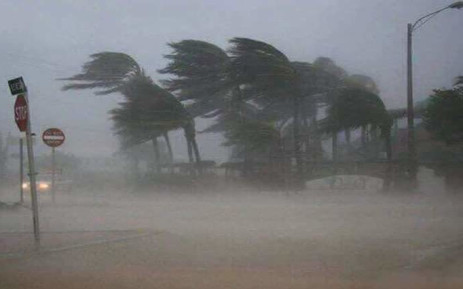At least 265,000 people have been affected by Tropical Cyclone Eloise as it took a westward path across Southern African countries in the past few days, according to available official data.

In Mozambique, 15,930 people remain displaced by flooding in affected areas, and the National Institute for Disaster Management and Risk Reduction (INGD) has reported that at least 19,393 houses have been destroyed, mainly in Sofala Province, and at least 424 classrooms and 82 health centres will need repairs.
Rapid humanitarian needs assessments are ongoing to obtain a fuller picture of the situation and these figures may change in the days ahead.
Meanwhile, the low pressure system generated by Eloise has largely dissipated after moving over southern Botswana and northern South Africa. However, it is expected to still influence weather in Southern Africa through to the weekend.
According to the UN Office for the Coordination of Humanitarian Affairs (OCHA) in Southern and Eastern Africa, Cyclone Eloise has, in its wake across the region, left at least 15 people dead — two in Mozambique, three in Zimbabwe, two in Eswatini, two in South Africa and one in Madagascar.
As of January 26, the ex-Eloise weather system was a much-weakened extra-tropical depression situated over the southwestern parts of Botswana, according to the South African Weather Service (SAWS).
In South Africa, the low pressure system is expected to bring scattered to widespread rains to the central parts of the country until the weekend. On January 27, however, the ex-Eloise weather system was expected to interact with a cold front passing South Africa, which could bring significant amounts of rainfall over eastern Northern Cape, western North-West Province and western Free State, according to SAWS.
The SAWS has issued warnings for “disruptive rainfall” from January 26 to January 29, including a yellow alert for western North-West Province and the extreme north-eastern parts of Northern Cape, spreading to western and central Free State.
In Zimbabwe, access remains a challenge in districts where roads were destroyed, with some areas still flooded. In Masvingo Province, more than 400 households have been affected by heavy rain in: Gutu District.
The District Civil Protection Unit (DCP) has reported to IOM that the dams in Gutu District have reached full capacity and there is a risk of flooding.
In Bitika District of Masvingo Province, the District Development Coordinator has reported that preliminary findings from the concluded assessments highlighted water and sanitation as serious concerns, with people reportedly drinking unsafe water after boreholes were swept away or flooded by heavy rains, according to preliminary information.
Nutrition and food concerns were also noted, including reports that some mothers have stopped breastfeeding. In wards 1, 2 and 3 of the district, 10 houses were damaged and blankets, mosquito nets, solar pumps, hygiene supplies, and jerry cans were requested.
In Beitbridge, Matabeleland South Province, the DCP is assessing needs. The Tugwe Mukosi dam remains above capacity and there are concerns that continued spillover may impact livelihoods.
